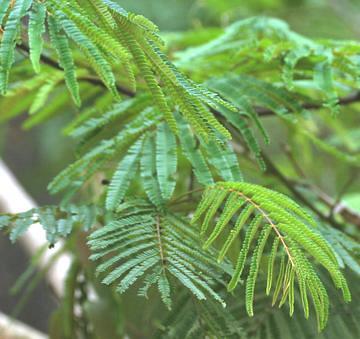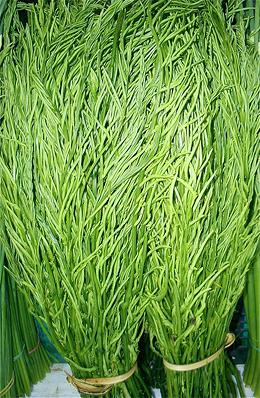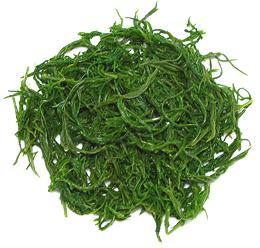 [Cha-om (Thai); Pak La, Pak Ka (Laos); Su pout ywet,
Tsu boht (Burmese); Saom (Cambodia); Khang-khu Khangkhuh (Mizoram,
Manipur India); Senegalia pennata, formerly Acacia pennata]
[Cha-om (Thai); Pak La, Pak Ka (Laos); Su pout ywet,
Tsu boht (Burmese); Saom (Cambodia); Khang-khu Khangkhuh (Mizoram,
Manipur India); Senegalia pennata, formerly Acacia pennata]
This vine-like climbing shrub or small tree (to 16 feet tall) is native to South and Southeast Asia. Feathery leaf shoots are used in omelets, curries, soups and stir fries in Thailand, Burma, Laos and the Indian states of Mizoram and Manipur, adjacent to Burma. Acacia omelets are particularly popular as a side dish or added to soups in Thailand, and also in Cambodia.
The flavor and aroma will be quite unfamiliar to most people in North America, a bit like rubber cement, and may be off-putting to some who are not accustomed to it, so use with caution. It is similar in taste to Mexican Guaje Beans (also an Acacia).
This plant is highly illegal in Australia and New Zealand because it invades grazing land. Seeds and plants are also illegal in California, Hawaii and the Netherlands. Photo by J.M.Garg distributed under license Creative Commons Attribution-Share Alike 3.0.
More on Beans, Peas & Lentils


The version "without stems" may have some short pieces of stem included, so, after thawing, wring them out and massage the lump to locate any stiff stem pieces and remove them.
In Southeast Asia Cha Om is often served steamed "on the stem". The diner will strip the stems with his/her teeth. Unfortunately the frozen ones "with stems" don't look nearly as nice as fresh steamed, so I don't particularly recommend them.
Recipes often call for "a bunch". Judging by pictures from Thailand, a bunch of stems probably weighs between 6 and 8 ounces - fairly large because only the youngest leaf shoots can be used, and the stems are discarded. Photo of bunches in Thailand by Susan Slater, distributed under license Creative Commons Attribution-ShareAlike v4.0 International.